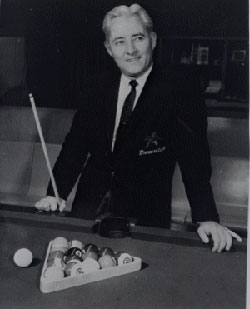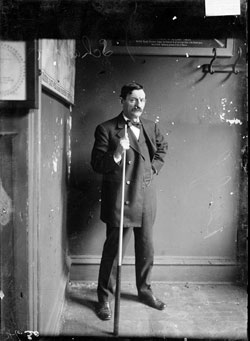LEGENDARY POOL / BILLIARD PLAYERS
From its earliest days, billiards has been enjoyed by a host of colorful (and controversial) figures. The game’s history is replete with historic legends and characters; from monarchs and presidents, scholars and artists, to the legendary players and inventors, that forever changed the face of the game.
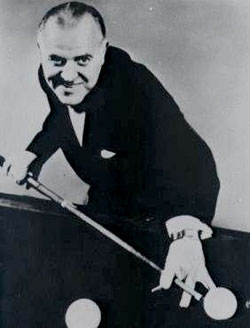
WILLIE HOPPE – “The King”
(b. Oct. 11, 1887, Cornwall-on-Hudson, NY
d. Feb. 1, 1959)
Hoppe won the world 18.1 balkline championship by beating Maurice Vignaux of France on January 15, 1906. He also held that title in 1908, from 1909 through 1911, and from 1914 through 1926. After losing the championship to Jake Schaefer Jr. in 1926, Hoppe regained it in 1927, the last year competition took place in that form of billiards.
The world 18.2 balkline champion in 1907, from 1910 through 1920, from 1923 through 1924, and in 1927, Hoppe began concentrating on three-cushion billiards in the 1930s. He won world championships in 1936, from 1940 through 1944, and from 1947 until his retirement in 1952.
Many of Hoppe’s records still stand, including an unbelievable run of 622 in 18.2 balkline during an exhibition in 1912. He set records with runs of 20 points in three-cushion league play in 1927 and three-cushion match play in 1945, and he ran a record 25 points in a 1928 exhibition against Charles C. Peterson. His grand tournament average of 1.33 in 1950 is also a record.
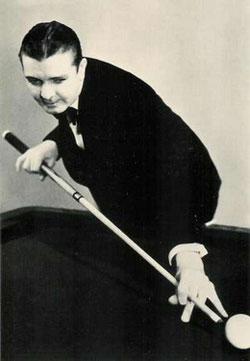
RALPH GREENLEAF – “The Showman”
(b. Nov. 3, 1899, Monmouth, IL
d. March 15, 1950)
Generally ranked second to Willie Mosconi among the all-time great pocket billiards players, Greenleaf won the world professional title 6 times and defended it 13 times.
He held the championship from 1919 through 1924 and also won it in 1926, 1928, 1929, 1931, 1932, and 1937. He set records in 1929 for high single-game average, 63, and high grand average, 11.02, on a 5- by 10-foot table.
A colorful showman, Greenleaf continued to attract spectators to exhibition matches until his death of a heart attack in 1950.
Just as “Billiards” was synonymous with “Willie Hoppe,” to many fans, “Pocket Billiards” meant “Willie Mosconi.” If Ralph Greenleaf had rescued pool in the 1920’s, it was Willie Mosconi who kept it alive in its post-World War II decline. Mosconi was truly a wizard at the table. From 1940 to 1957, he had a near-strangle hold on the world title, winning it fifteen times. It was during the “Mosconi Era” that pool replaced billiards as America’s game of choice. It was upon his retirement in 1957, that public interest in the game all but withered and died. He entered his first major tournament in 1937 and won the world pocket billiards championship in league play in 1941 and in tournament play the following year. After losing the championship in a match with Andrew Ponzi in 1943, he regained the title by beating Ponzi in 1944 and held it until 1946, when Irving Crane won a world championship tournament.
Mosconi reclaimed the championship by beating Crane in a 1947 match. From 1950 through 1953 and in 1956 and 1957, Mosconi won annual tournaments to become world champion. He retired from competition after suffering a stroke in 1957.
In 1954, Mosconi ran a record 526 balls during an exhibition in Springfield, OH. He also set a record for highest run in a single game, 127 balls, in 1945, and his high grand tournament average of 18.34 balls in 1950 is the record for a 4 1/2 by 9-foot table.
Even after his retirement from formal competition, Mosconi was an enthusiastic promoter of pocket billiards for the Brunswick company, giving exhibitions and appearing in televised matches. He was technical advisor for the 1961 movie, The Hustler, which starred Paul Newman and Jackie Gleason.
“A player whose super-brilliance with a billiard cue won for him the sobriquet of ‘Wizard.” So sums the lead of a 1909 newspaper article signing the praises of JAKE SCHAEFER, SR. From the last quarter of the 19th century through the first decade of the 29th, Schaefer, Sr. was one of the most feared names in Balkline Billiards. Derivations of the game were invented just to stymie his genius – all unsuccessfully. He traveled throughout the world winning matches and gathering fans. On March 11, 1908, though desperately ill, he successfully defended his title in his final match for the 18.1 championship against Willie Hoppe by a score of 500 to 423.
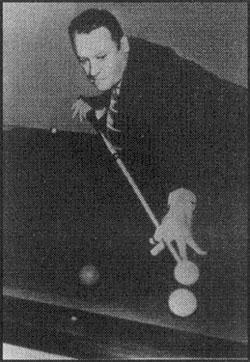
JAKE SCHAEFER, JR. – “The Prodigy”
At the 18.2 game, he holds four records which have never been equaled in this country: best game average, 400 (from the break); grand average, tournament, 57.14; grand average, match, 93.25; high run, match, 432. To this day, holds four Balkline world records that have never been equaled or broken.
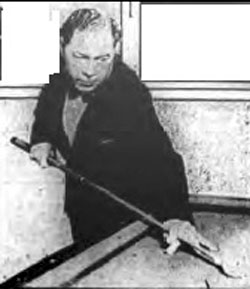
JOHNNY LAYTON – “The Diamond King”
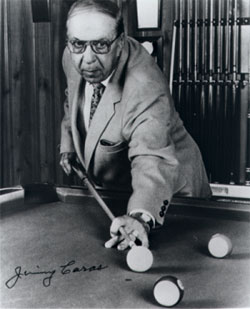
JIMMY CARAS – “The Boy Wonder”
His record of “most balls”, “most games won” and “fewest innings by a champion” still stand in the record book for that size field. Mr. Caras was inducted into the BCA Hall of Fame in 1977. He recently passed away and is missed.
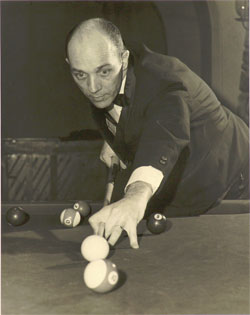
Harold John Worst
(1929 – June 16, 1966)
Harold Worst won the 1965 Johnston City One-Pocket outright, as well as that year’s Stardust Open. He was nearly unstoppable when he was at the top of his game. Worst could have been remembered as the most dominant player of the 1960s if not for his premature death (at age 37) from cancer.
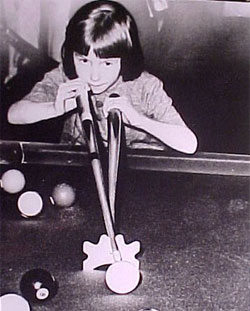
A 6-year-old Jean Balukas performing in an exhibition in Grand Central Station (1966)
Balukas was considered a prodigy, coming to the public’s attention first at 6 years of age at a pool exhibition held at New York City’s Grand Central Station and thereafter appearing on television, including on CBS’s primetime television show, I’ve Got a Secret. At just 9 years old she placed 5th in the 1969 U.S. Open straight pool championship, and placed 4th and 3rd respectively in the following two U.S. Opens. From that early start, Balukas completely dominated women’s professional pool during the 1970s and 1980s.
Balukas won the U.S. Open seven years in a row from 1972 through 1978, accumulating six world championship titles, had well over 100 professional competition first-place finishes with 38 majors to her name, had a streak of 16 first-place finishes in women’s professional tournaments, and was the only woman to compete on equal footing with men in professional play in her era. She quit the sport amidst controversy in 1988 while at the height of her ability, due to a dispute over her conduct in a match at the World Open Nine-ball Championship of that year.
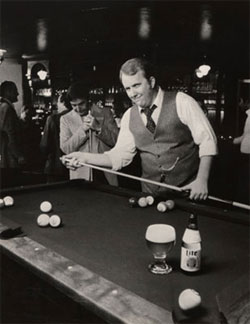
Steve “The Miz” Mizerak
Miller Lite, a beer company that used sports celebrities to sell its product in the 1970s and 1980s, shot a commercial that showcased Mizerak. In the commercial, Mizerak made a difficult trick shot making the commercial famous. During the funny advertisement, Steve says that you can “really work up a thirst even when you’re just showing off.” When he was asked how many takes did it took for him to get all 3 of those shots to work like they did, Mizerak responded, “You can’t really say it in that way. Sometimes there were other things that happened besides the shots going. The shots would go but the film wasn’t in focus. Someone in the background would sneeze. You know, somebody did something else. We actually did it 181 times in 8 1/2 hours. We did it from about 9:30 in the morning to 5:00 in the afternoon. It was a long day, but it was a very successful day and it was a day that would change my career and my life. I owe a lot to Miller Lite and I also owe a lot to my wife Karen.”

